TWO HARBORS, Minn. — It all started with sandpaper, but a little stick-to-itiveness turned it into something much bigger.
When Minnesota Mining and Manufacturing — better known as 3M — was founded in Two Harbors in 1902, its focus was on producing high-quality sandpaper. By the 1920s, the company had built a strong reputation in the abrasives industry.
So no one could have predicted that a banjo-playing engineering student would be the one to transform 3M into a household name — thanks to an invention that would be used for everything from repairing torn masterpieces to wrapping Christmas presents: Scotch Tape
The banjo-player Gopher
Richard Drew was born in St. Paul in 1899. He spent much of his free time playing the banjo in local dance bands and earned enough money to pay for engineering classes at the University of Minnesota. However, the demands of taking classes during the day and playing in bands at night took their toll. Drew dropped out.
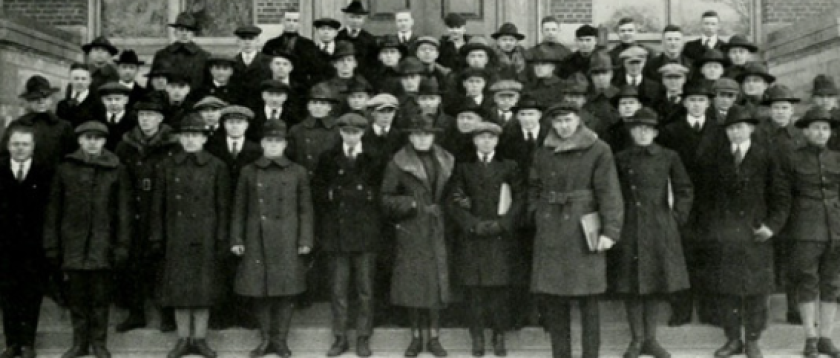
In 1921, he was hired by 3M as a research assistant. One of his responsibilities was to deliver waterproof sandpaper samples to auto shops in the Twin Cities for testing. There, he noticed car painters were struggling with a frustrating problem — two-tone paint jobs were all the rage in the Roaring Twenties, but the available masking tapes either peeled off too much paint or left behind a sticky mess.
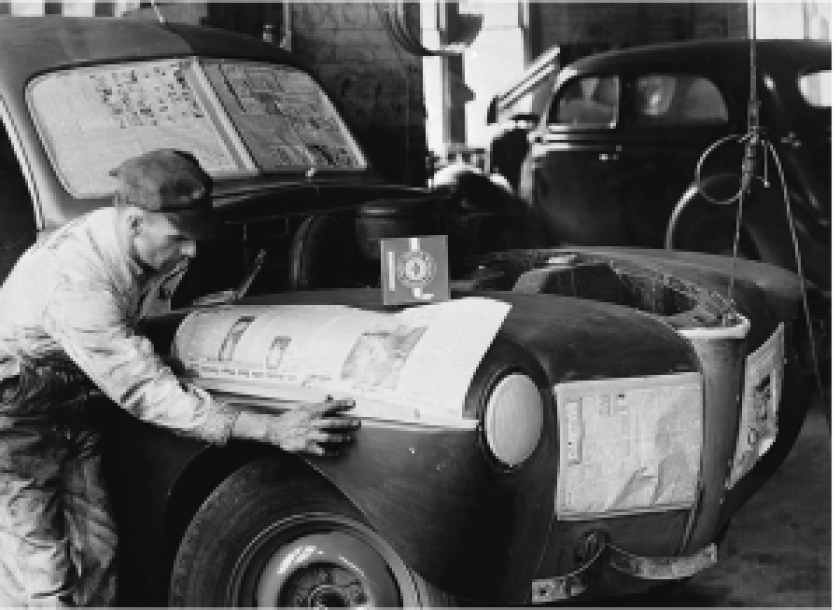
In an interview later in his life, Drew recalled those visits with the frustrated painters overhearing "the choicest profanity I'd ever known!"
Watching their struggles, Drew had a light bulb moment: what if there were a tape that stuck well enough to seal off areas but could still be removed cleanly?
Drew pitched his idea to 3M, and after some trial and error in the company’s lab, he developed a tape with just the right balance of stickiness and flexibility. In 1925, Scotch Masking Tape made its debut. But Drew wasn’t done yet.

ADVERTISEMENT
More sticky ideas take shape
Seeing another opportunity, he turned his attention to a common frustration in grocery stores and bakeries: cellophane-wrapped packages that refused to stay sealed.
With some clever chemistry, Drew developed a transparent, moisture-resistant tape that could do the job. In 1930, Scotch Cellophane Tape was born. Little did he know, his invention would soon become a Depression-era necessity as money was tight and Americans looked for ways to make things last.
Heather Green, Global Portfolio President of 3M's Consumer Business Group, said the tape helped struggling families make vital repairs.
"Some things you'd expect — like mending torn pages, fabric or money, but people also used it for minor home repairs and to preserve food like canned milk or cracked eggs," Green said.
From snails to Scotty McTape
By 1939, 3M introduced the now-iconic dispenser that resembled a snail. A few years later, they went into battle.
During World War II, 3M created over 100 different types of tape for military applications, helping seal, insulate and repair equipment.
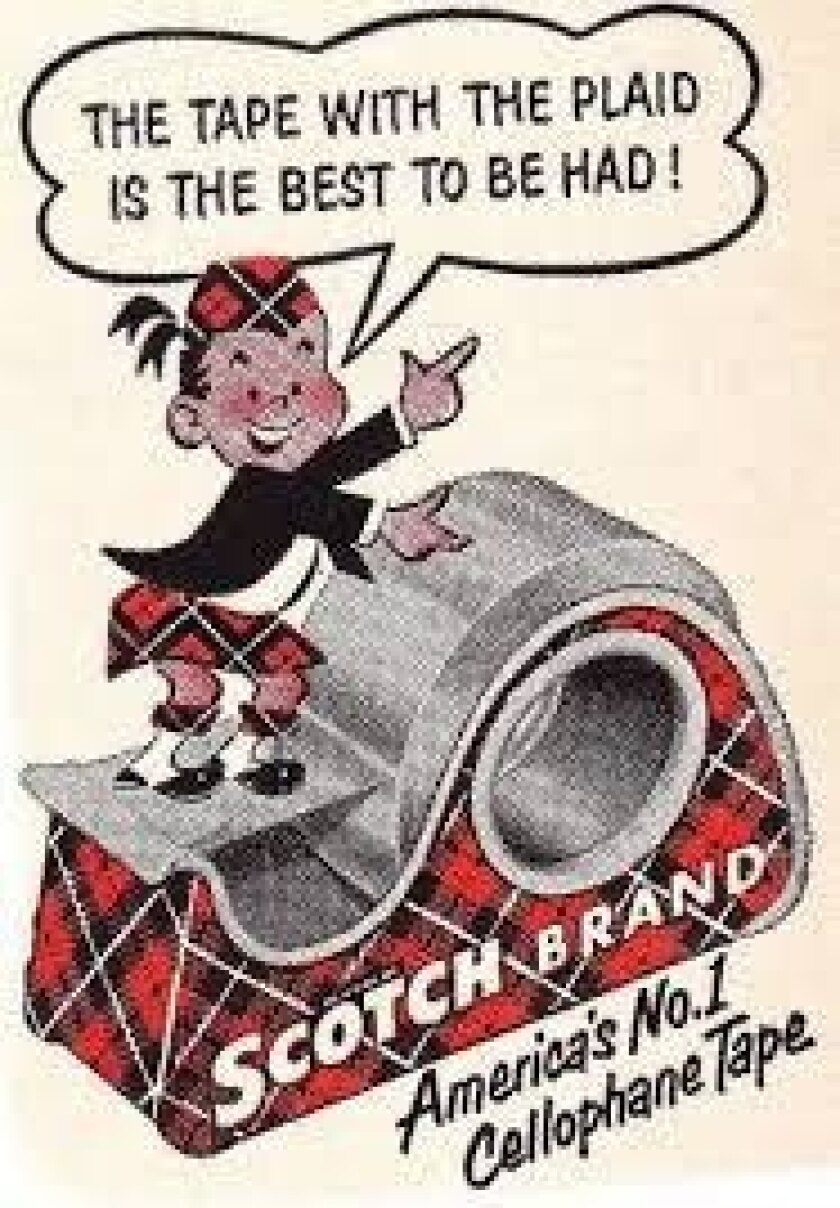
The post-WWII era brought a new mascot: Scotty McTape.
ADVERTISEMENT
The cheerful cartoon boy, dressed in tartan plaid, appeared in print and television ads, symbolizing the Scottish branding theme. Around the same time, the company also added a tartan design to its packaging, further emphasizing its "Scotch" identity.
Green said that while they've had several interesting ad campaigns over the years, one of the most popular was a black-and-white magazine ad encouraging people to use the product for better bang trims.
"Try it out! Apply a straight line of Scotch Magic Tape and follow the line with your scissors," she said.
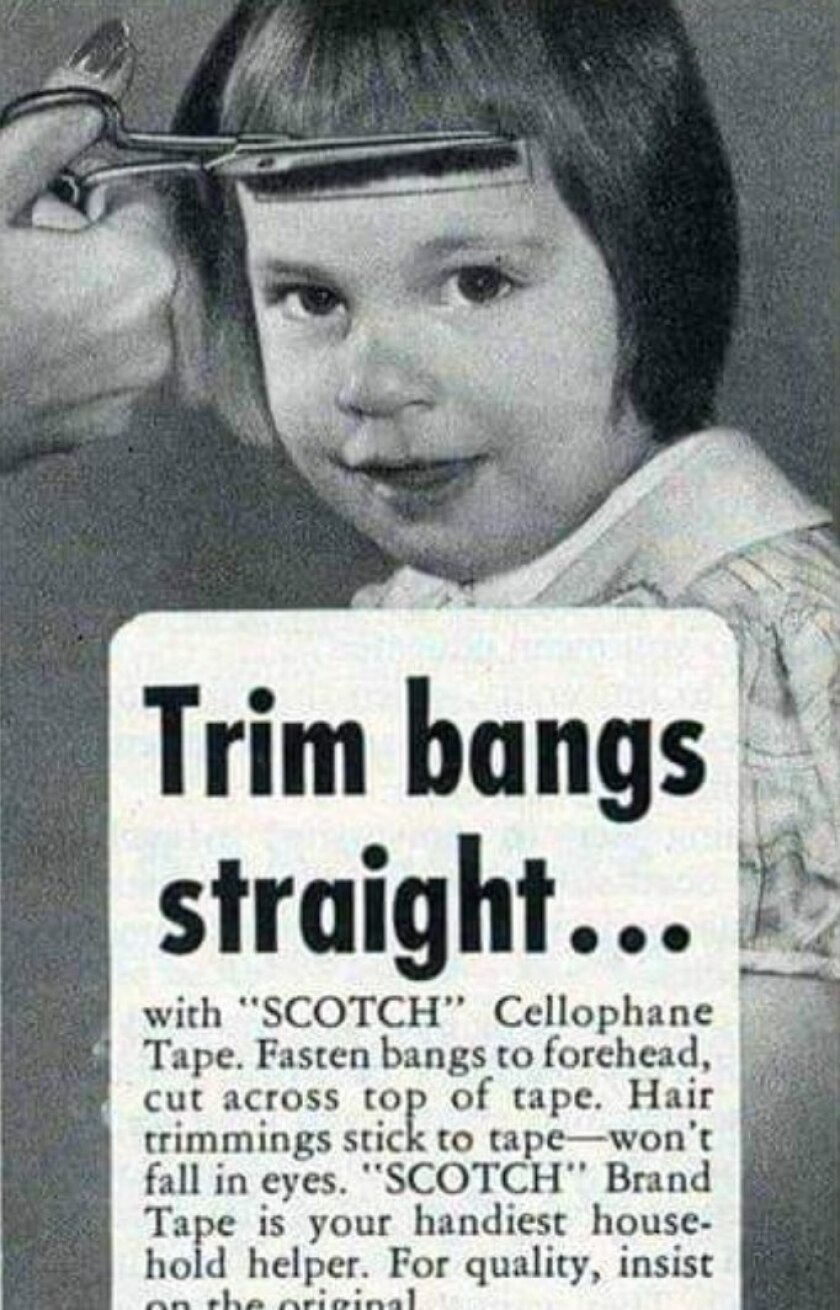
How Scotch tape got its name
The debate has raged for years over how Scotch Tape got its name, but legend attributes it to one of those frustrated auto painters giving feedback to Drew. During the testing phase of the masking tape, early versions had only a small amount of adhesive, causing them to peel off too easily. Annoyed, one painter supposedly snapped, "Why so Scotch with the adhesive?"—using "Scotch" as a slang term for stingy. Drew and his team got the message and made the tape stickier, but the name stuck, too.
From its humble beginnings in a Minnesota lab, Scotch Tape has found its way into the world. Today, as the brand celebrates its 100th birthday, the 3M facility in Hutchinson, Minnesota, produces 12 million miles of tape yearly — enough to circle the Earth nearly 500 times!
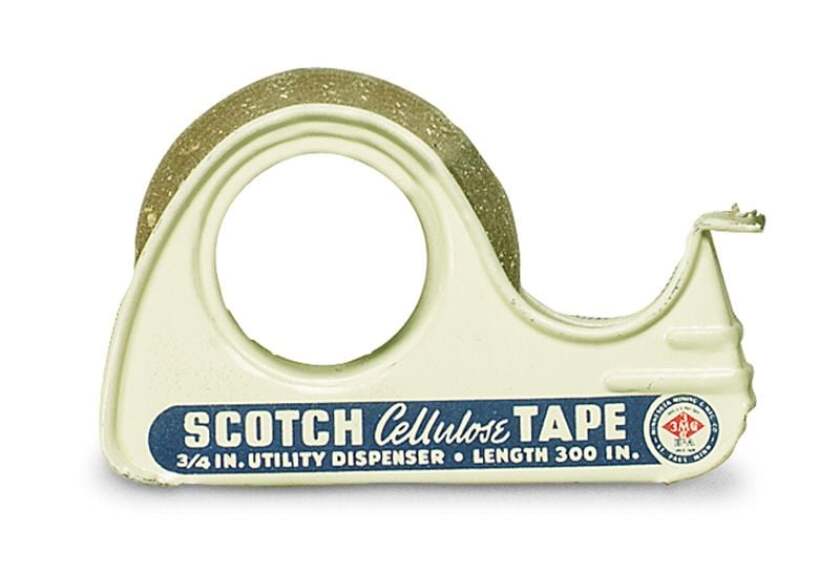
In one survey from 1985, Americans voted Scotch Tape the most indispensable household product. In 2004, the Museum of Modern Art in New York City named Scotch Tape a "Humble Masterpiece."
ADVERTISEMENT
Happy birthday to this Minnesota-born invention that really stuck!

Hi, I'm Tracy Briggs. Thanks for reading my column! I love going "Back Then" every week with stories about interesting people, places and things from our past. Check out a few below. If you have an idea for a story, email me at tracy.briggs@forumcomm.com.














